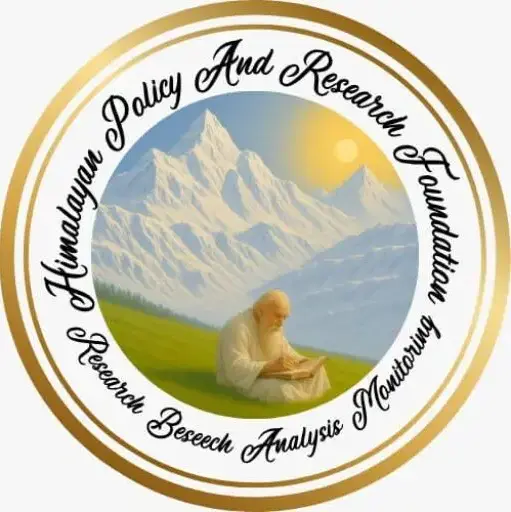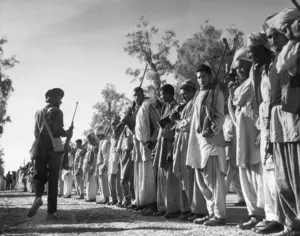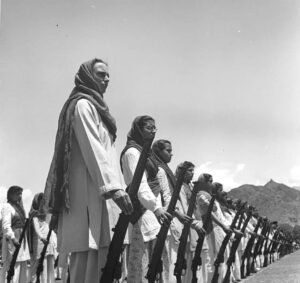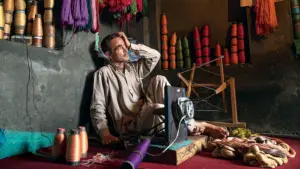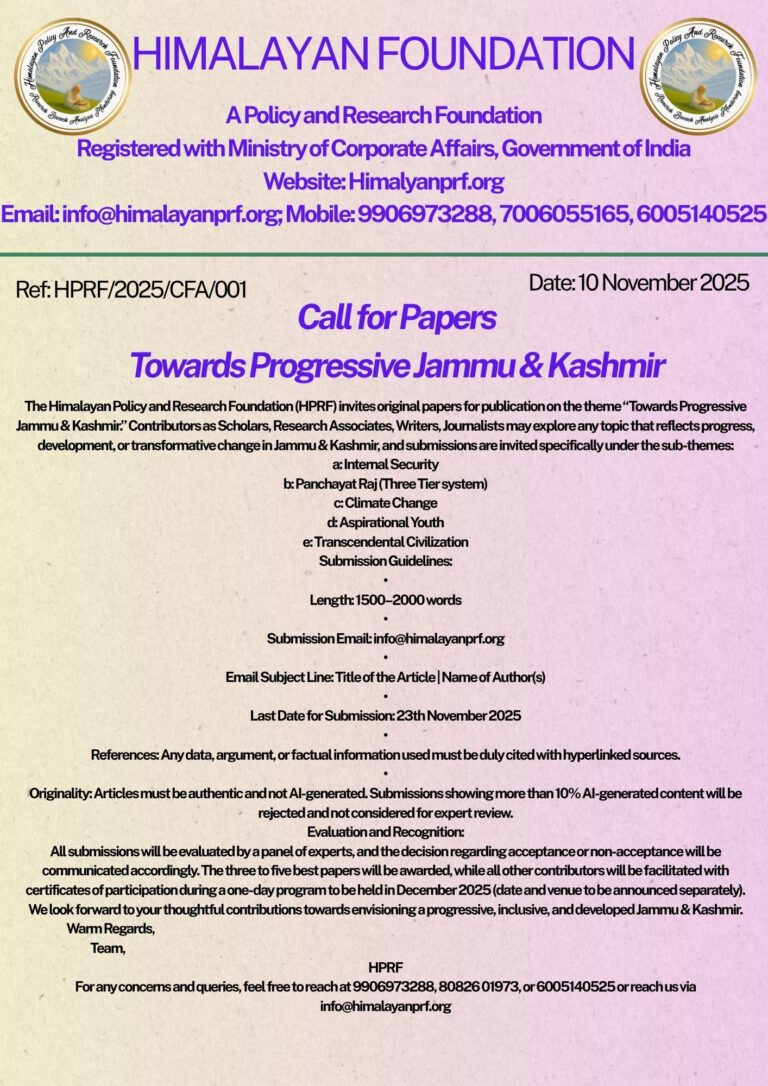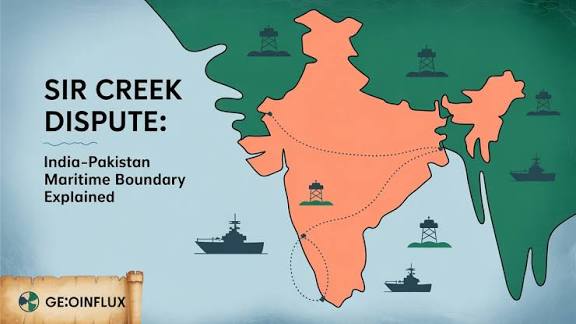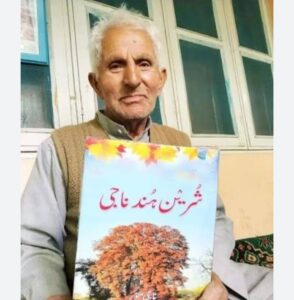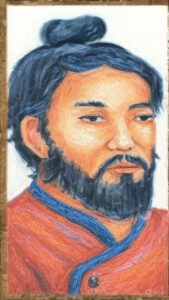BY: Peerzada Muneer
Introduction:
The Jammu and Kashmir region remembers things that others forget. Its elders carry not only family histories and folk songs but layered memories of livelihoods, land, loss, and decades of uncertainty. Yet, in a moment when public attention mostly orbits youth unemployment, political contestation, and visible forms of violence, a quieter crisis is unfolding at the other end of life’s arc: the fraying mental and social wellbeing of older citizens. “Between Silence and Survival” names this precarious borderland — where the cultural authority of elders, once woven into joint households, religious gatherings and neighbourhood life, is being eroded by migration, social change, loneliness, and the long shadow of conflict.
Elderly wellbeing in Jammu and Kashmir is not reducible to clinical geriatric care. It is instead a prism through which broader social transformation becomes visible: the collapse of joint families into nuclear units, the exodus of youth for education and employment, and the widening generational gap driven by technology and changing cultural aspirations. For many older Kashmiris, loss is double-edged: insecure pensions and uneven welfare schemes on the one side, and on the other, an emotional void created by absent children, fading rituals, and declining recognition of their wisdom.
Silence, in this context, does not mean serenity. It denotes loneliness after bereavement, the absence of daily companionship, and the undiagnosed persistence of depression and dementia—conditions worsened by stigma and limited access to mental health services. Survival, meanwhile, is not flourishing but endurance: navigating frail health systems, making do with modest pensions, and improvising social networks for sustenance and dignity.
The historical backdrop intensifies this crisis. Older generations have lived through curfews, crackdowns, and violence, leaving deep psychological scars. Trauma rarely fades with time; it compounds when social scaffolds weaken. Added to this, modernization and digital transformations shift value toward the young and globally connected, sidelining the elderly who were once custodians of oral tradition and community memory.
This article situates the condition of Jammu & Kashmir’s elderly as both an intimate and structural problem. The sections that follow explore three interwoven dimensions: the rise of old-age homes as symbols of shifting family structures; the mounting mental health burden, neglect, and abuse that define many elderly lives; and the deeper ethical and philosophical contradictions of a society increasingly shaped by materialism, individualism, and the erosion of intergenerational solidarity. Addressing elderly wellbeing is not an exercise in nostalgia—it is a necessary investment in Jammu & Kashmir’s social resilience, moral integrity, and the preservation of its collective memory.
I. The Rise of Old-Age Homes in Jammu & Kashmir
Until recently, the notion of an old-age home in Jammu & Kashmir seemed unimaginable. The society here, like much of South Asia, has long been anchored in kinship and the joint family system where caring for one’s parents was not a choice but a moral and religious obligation. Yet, in the past few years, institutional elder care has moved from the unthinkable to the inevitable, with the Jammu and Kashmir administration establishing residential and day-care facilities across nearly two dozen districts as a response to a growing care deficit (Kashmir Life; Kashmir News Observer). The arrival of such homes has provoked a divided response: hailed by some as a pragmatic lifeline and condemned by others as a cultural betrayal.
First-hand accounts from within these institutions reveal painful narratives. Residents frequently describe not choosing institutional living but being compelled by neglect, abuse, or economic deprivation. The Guardian’s 2023 report from Srinagar recounted elders arriving at homes with injuries, meagre belongings, and stories of being locked indoors or even abandoned on the roadside before being rescued by activists (The Guardian). Other reports detail parents being forced out after inheritance disputes, denied shelter when children married, or mistreated in ways that rendered home life unbearable (Rising Kashmir).
Loneliness is the most cited reason for seeking refuge in these facilities. The collapse of joint family living and migration of children for education or employment has left many elders without daily companionship. The elderly themselves often speak of silent evenings in deserted homes, punctuated only by longing for visits or calls that rarely come (Kashmir Observer). Others identify economic neglect, absence of reliable pensions, irregular support from children, or disputes over land, as the trigger that pushed them to institutional care (Kashmir Life). Still others point to domestic violence: physical abuse, intimidation, or emotional cruelty at the hands of their own kin, leading them to seek shelter elsewhere (Kashmir Observer).
The rise of old-age homes has provoked intense cultural debate. Traditionalists view them as symbols of moral collapse. Opinion pieces in local media argue that such institutions replace sacred obligations of filial duty with bureaucratic or contractual care, eroding the moral economy that sustained Kashmiri families for centuries (Rising Kashmir; Kashmir Pen). Others counter that they are necessary safety nets. For destitute elders who have been abused, abandoned, or left without shelter, these facilities may represent the only chance at dignity and survival (The Guardian).
The contradiction lies in the fact that old-age homes are both lifelines and indictments. They offer meals, medicines, and companionship but also embody the breakdown of intergenerational reciprocity that once defined Kashmiri social life.
The spread of these homes cannot be understood without examining deeper pressures. Kashmir’s protracted conflict has disrupted livelihoods, making it difficult for younger generations to sustain family-based care. Youth migration has intensified the absence of caregivers. Rising unemployment, among the highest in India, has sharpened family stress, with some children resenting the financial burden of dependent parents.
Moreover, digital and cultural shifts widen the generational gulf. Elders who once commanded authority as custodians of oral memory and religious knowledge often find their wisdom sidelined in a youth-centric, digitally mediated world. Academic analyses warn that state responses remain ad hoc, with uneven pension coverage and inadequate regulation of elder-care facilities, leaving elders at risk of both neglect at home and exploitation in institutions (IUST).
While expanding care infrastructure may seem like progress, reports caution that old-age homes themselves risk becoming sites of neglect. Investigations describe overcrowding, understaffing, and inadequate medical support in some facilities (Rising Kashmir). The emotional toll of separation from neighbourhoods and familiar spaces remains immense. For many elders, institutional life is not chosen community but coerced exile.
The policy challenge is therefore twofold: to protect abandoned and abused elders today, while preventing institutionalization from becoming the default solution. Without investments in pensions, home-based services, and community day-care, old-age homes may inadvertently normalize abandonment.
The rise of old-age homes in J&K is more than an administrative development; it is a cultural barometer. On one side are elders who describe abandonment, betrayal, and violence from their own children; on the other, institutions that provide survival but often at the cost of belonging. They stand as physical embodiments of social breakdown: buildings that house not only frail bodies but also indictments of poverty, fractured kinship, and the limits of a welfare system still catching up with demographic realities.
If approached thoughtfully, these homes could become transitional havens — combined with community-based programs, home visits, and legal protections to restore dignity. If not, they risk being monuments of abandonment, stark reminders of the Valley’s elders trapped between silence and survival.
II. Mental Health, Abuse, and the Quiet Crisis
If old-age homes are visible symbols of shifting family structures in J&K, mental health is the quieter, more insidious crisis shaping the lives of the elderly. The silence of neglected parents is not only social but psychological: depression, anxiety, dementia, and trauma remain under-recognized, untreated, and often endured in isolation. Together with abuse and neglect, these conditions push older adults into a precarious survival defined less by flourishing than by endurance.
A useful entry point into this problem is the epidemiological data that has emerged in recent years. The National Mental Health Survey of India (2015–16) provided the first comprehensive indication of high psychiatric morbidity across adult groups, coupled with extraordinarily low treatment-seeking rates PubMed Central. Building on this, a 2023 analysis of the Longitudinal Ageing Study in India (LASI) estimated dementia prevalence among adults aged 60+ at 7.4% nationally, around 8.8 million people, but placed Jammu & Kashmir higher, at about 11.0%, making it one of the states with the greatest relative burden (PubMed Central). In a society where 7.3% of the 2011 population was already over 60 Census India, this translates into tens of thousands of elders living with cognitive decline, most without structured care. The numbers, while abstract, are lived realities: dementia manifests not only in memory loss but in dependency, behavioural disturbances, and vulnerability to neglect.
The scale of need is accentuated by local studies. A 2024 epidemiological survey in Kashmir covering 4,000 adults found that 11.3% had diagnosable psychiatric disorders, with depression (8.4%) and anxiety (5.1%) dominating the profile. Crucially, only 12.6% of those affected were receiving any form of treatment (PubMed Central). Older adults, who face mobility restrictions, greater stigma, and limited caregiver support, are likely to fare even worse in terms of access. The WHO reminds us that loneliness, social isolation, poverty, and abuse are key drivers of late-life mental health decline (WHO). In Kashmir, these are compounded by decades of conflict, prolonged lockdowns, and economic precarity, which together accelerate psychosocial stress and disintegration of family safety nets.
Against this backdrop, the service capacity of J&K’s health system is disquietingly thin. India overall has only 0.7–0.8 psychiatrists per 100,000 people, far below the WHO recommendation of at least 3 per 100,000 (The Economic Times). In conflict-affected peripheral regions like Kashmir, specialist geriatric services are virtually absent. Even the most basic outpatient mental-health clinics are overburdened, with stigma continuing to suppress demand AP News. The result is a widening chasm: a population where nearly one in ten older adults may live with dementia, depression, or anxiety, and a system structurally incapable of meeting them with timely or culturally attuned care.
The consequences are visible in everyday testimonies: elderly Kashmiris describing endless loneliness, hopelessness after bereavement, or the anxiety of being dependent on reluctant children. Depression and dementia here are not isolated pathologies but reflections of broader social fragmentation.
Mental health decline is often compounded by abuse and neglect at home. Investigations reveal elders enduring violence, humiliation, or economic exploitation by their own children. In 2025, Kashmir Observer reported among numerous case, a case of an 80-year-old woman: “I raised him, then he raised his hand,” recounting physical assault by her son over property disputes (Kashmir Observer).
These are not isolated anecdotes. HelpAge India’s Elder Abuse in India Report 2022 found that 15% of older adults reported direct abuse, while 47% knew another elder who had been abused (HelpAge India). Common forms include verbal abuse (59%), neglect (48%), and economic exploitation (36%). Applied to J&K’s population, this suggests that at least 135,000 elders may have suffered abuse. Cultural stigma often prevents disclosure: to speak against one’s children is considered shameful, so suffering is endured silently, deepening psychological scars.
Economic dependency magnifies the risk. Property disputes are flashpoints: elders coerced into signing away land or denied inheritance rights often find themselves evicted, with institutional care as their only refuge. Abuse in these contexts is not just interpersonal cruelty but a product of systemic economic fragility.
The mental health of Kashmir’s elderly cannot be disentangled from the Valley’s protracted conflict. Decades violence have left psychological wounds that often resurface in old age. Above mentioned 2024 epidemiological study confirmed that exposure to conflict and displacement had long-term consequences, with older adults disproportionately affected by post-traumatic stress, chronic anxiety, and depression.
Community gatherings, mosques, shrines, gurdwaras, temples, once vital buffers against loneliness, are themselves disrupted. The result is a double burden: unresolved trauma from the past and inadequate scaffolding in the present.
What emerges from these intersecting realities is a layered crisis. Elders are caught between silence, the unspoken abuse, the stigma of depression, the invisibility of dementia, and survival, mediated by fragile pensions, overstretched institutions, or improvised neighbourly support. For many, dignity is reduced to endurance: waiting for calls that never come, queuing for medicines in overcrowded clinics, or clinging to memories of households now empty.
Old-age homes, in this context, function as both refuge and indictment. They shelter those who have been abused or abandoned, yet also highlight the erosion of intergenerational responsibility. Without broader reforms, enforcement of pension rights, expansion of mental-health services, regulation of care facilities, and awareness programs to destigmatize treatment, institutional care alone risks normalizing abandonment rather than addressing its roots.
The suffering of Kashmir’s elderly cannot be dismissed as an inevitable consequence of aging. It is a product of systemic neglect, fractured kinship, and inadequate policy. Each statistic on dementia or depression is tethered to lived experiences: parents betrayed by children, widows enduring loneliness, men humiliated by property disputes, women silenced by abuse. Their survival, too often, is not dignified living but quiet endurance in hostile environments.
Addressing this crisis demands that policymakers, social workers, and communities confront uncomfortable truths: that homes themselves can be sites of violence, that silence is not serenity but stigma, and that survival without recognition is no victory. Until then, Kashmir’s elderly will remain trapped in a cycle of invisibility, their suffering hidden in plain sight.
III. Ethical and Philosophical Dimensions of Elderly Wellbeing in J&K
The condition of the elderly in Jammu and Kashmir today cannot be reduced to statistics on dementia prevalence, reports of abandonment, or the growing number of old-age homes. These are important indicators, but beneath them lies a profound philosophical and ethical crisis. A society once marked by reverence for elders, collective living, and the intergenerational transfer of wisdom now finds itself unmoored. What was once considered sacred, the presence of the elder at the heart of the household and community, has been hollowed out by economic pressures, social transformations, and shifting priorities. The resulting dissonance is not only practical but deeply moral and psychological, raising fundamental questions about what it means to live, to age, and to belong.
Kashmir, in its self-understanding, has always projected itself as a society rich in values, whether those derived from its religious vibrancy, its Sufi traditions of compassion and khidmat (service), its Sikh emphasis on seva (selfless service), or its Hindu practices of filial reverence. These traditions once animated daily life, making care for elders not an act of charity but an unquestioned moral duty. The paradox is that in a context where religious and ethical idioms remain pervasive, the reality is one of parents abandoned after property disputes, elders left to die in isolation, and homes filled with men and women who once presided over families but are now relegated to anonymity. This gap between professed values and lived practices reveals what philosophers might call an ethical schizophrenia: a society proclaiming reverence while simultaneously betraying it.
The philosopher Alasdair MacIntyre argued that when moral traditions lose their coherence, societies enter a stage of emotivism, where values are asserted rhetorically but emptied of content. Something similar is visible in Kashmir: identity markers and rituals remain strong, but the moral obligations they once carried, especially toward the elderly, are eroding. This produces not only hypocrisy but an ethical void, a hollowing-out of the very principles on which society once rested.
The mental health crisis of Kashmir’s elderly is not only about individual depression, anxiety, or dementia, but about ontological insecurity — the loss of place, role, and recognition that makes life meaningful. To strip elders of their role as decision-makers, storytellers, and moral anchors is to displace them from the symbolic order of society. Psychology teaches us that identity is relational: we know ourselves by the roles we inhabit and the recognition we receive. For elders, being moved from the centre of family life to its margins, or physically into institutional homes, produces not only loneliness but a collapse of selfhood.
This psychological violence is compounded by silence. In many cases, elders do not speak openly about rejection for fear of shame or stigma. Silence becomes both a prison and a survival mechanism. But such silence corrodes dignity, leaving elders to carry the double burden of suffering and invisibility. Philosophically, this is a failure of recognition, which thinkers from Hegel to Charles Taylor have identified as essential to human flourishing. Without recognition, survival is reduced to biological endurance rather than meaningful existence.
The removal of elders from family homes and from positions of authority has long-term consequences that go beyond the individual. Philosophically, it represents a rupture in the temporal continuity of society. Elders embody lived memory, accumulated experience, and hard-won wisdom — qualities that are not easily replaced by formal education or digital knowledge. When they are excluded from decision-making, families and communities risk becoming rootless, guided only by short-term aspirations and economic calculations.
The philosopher Hannah Arendt insisted on the importance of continuity between generations, warning that societies which sever ties with their past risk moral disintegration. In Kashmir, this risk is tangible. If elders are treated as burdens rather than as carriers of wisdom, the younger generation inherits not values but cynicism. The act of consigning elders to institutions, while perhaps solving immediate logistical problems, signals to youth that relationships are disposable, duties negotiable, and that survival may be pursued at the expense of solidarity.
This is not only a moral danger but a practical one. In contexts of conflict and instability, the resilience of a society often depends on the intergenerational transfer of patience, endurance, and memory. By excluding elders, Kashmir risks losing precisely the qualities that have historically allowed it to endure decades of turbulence.
The persistence of religious and cultural idioms in Kashmir complicates this crisis. Sermons, festivals, and rituals still celebrate compassion, service, and filial piety. But when elders are abandoned in old-age homes or subjected to neglect and abuse, these symbols risk becoming hollow. The vibrancy of religion and culture, once the guarantor of solidarity, now functions more as an identity marker than as a source of ethical practice. This disjunction between rhetoric and reality is corrosive: it breeds cynicism among youth, disillusion among elders, and a slow unraveling of trust.
From a philosophical perspective, this is a form of alienation: cultural practices that once embodied meaning now mask their absence. Elders, who should be the central beneficiaries of cultural and religious traditions, become instead the most visible victims of their erosion.
What then is required? Beyond policy measures and social services, Jammu & Kashmir faces the deeper task of reimagining elderly wellbeing as an ethical and philosophical commitment. Wellbeing must be understood not merely as absence of disease or provision of shelter, but as recognition, belonging, and dignity. Psychologically, this means creating spaces where elders remain integrated into community life, where their roles as mentors, advisors, and companions are reaffirmed. Philosophically, it means recovering a sense of continuity, where the past is not discarded but honoured as a living resource for the future.
This reimagining also requires courage: to confront the hypocrisies of a society that boasts values while betraying them; to move beyond ritual toward lived ethics; and to cultivate in younger generations a sense of responsibility that is not reducible to economic calculation. Unless such a transformation occurs, the silence of today’s elders will echo tomorrow as a deeper silence — the silence of a society that has lost its memory, its wisdom, and its ethical compass.
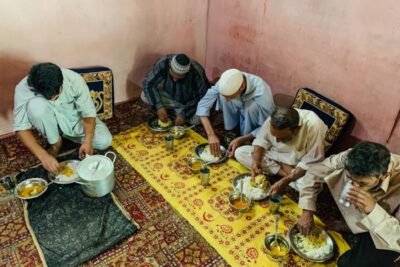
Conclusion:
The wellbeing of the elderly in Jammu and Kashmir is not merely a question of pensions, homes, or medical access. It is a mirror of what society is becoming. The rise of old-age homes, the epidemic of loneliness, the prevalence of abuse, and the silent deaths of parents abandoned in darkened rooms are not isolated tragedies; they are symptoms of a deeper malaise. What we are witnessing is a brazen shift toward materialism, nuclearity, and individualism — a shift that celebrates luxury, competition, and self-interest, while quietly dismantling the bonds of fraternity, paternity, and shared life.
This transformation is not an accident. It is, in part, the bitter fruit of values elders themselves have passed down to their children in recent decades: relentless competition, “survival of the fittest,” the pursuit of status and material success at all costs. In urging their children to “get ahead,” to migrate, to accumulate, and to compete, many parents inadvertently nurtured the very solipsism that now abandons them. In prioritizing the language of individual achievement over collective responsibility, they helped plant the seeds of a society that takes the humane out of the human, and the family out of individuals. The tragedy is circular: elders are now victims of the very ethos they helped normalize.
At stake is more than intergenerational harmony; it is the moral fabric of society itself. If nuclearity and greed become the default values, Kashmir risks entering a state of ethical desertification, where religion is reduced to hollow rituals, culture to nostalgic slogans, and ethics to empty talk. The wisdom of elders, once central to decision-making, is displaced by the noise of markets and the logic of competition. Such a society may achieve material advancement, but it will do so at the cost of inner emptiness, disintegration of families, and a loss of collective resilience.
Policy responses, while urgent, cannot succeed in isolation. Establishing old-age homes or expanding pension schemes are necessary, but they are not sufficient. What is required is a dual approach:
- Structural Interventions: Strengthening social security, ensuring universal pensions, integrating geriatric and mental health care into primary services, and building community day-care programs that keep elders integrated into neighbourhood life. Regulation of old-age homes, accountability mechanisms, and state support for caregivers are also vital.
- Ethical and Cultural Renewal: Families must be re-educated to understand that caring for elders is not a burden but a continuation of humanity itself. Schools and communities must integrate ethical education alongside technical skills, emphasizing compassion, solidarity, and interdependence. Elders themselves must resist reproducing a culture of competition and instead transmit values aligned with religion, culture, and the unpolluted nature of being human: humility, service, respect, and fraternity.
Philosophically, this crisis is about the erasure of recognition. Elders are no longer seen as subjects of dignity but as objects of inconvenience. To reverse this, society must restore the balance between survival and meaning. Psychology reminds us that wellbeing is not only biological endurance but also belonging, recognition, and purpose. When elders are denied these, society itself begins to wither.
The way forward requires courage: courage to critique the seductions of materialism, to question the hollow promises of individualism, and to resist the erosion of solidarity. It also requires imagination: to build new models of intergenerational contact that are adapted to contemporary realities without betraying fundamental values.
If Jammu and Kashmir is to reclaim its moral and cultural vitality, it must transform how it treats its elders. Parents and grandparents, rather than reproducing the rhetoric of competition, must pass down values of compassion, dignity, and shared life. Children must be raised to see elders not as burdens but as living libraries of wisdom, as reminders of continuity in a fractured world. Only then can society recover the essence of its traditions, reconcile survival with meaning, and ensure that aging is not exile but belonging.
The crisis of elder wellbeing is therefore not just about old age — it is about the kind of society Kashmir chooses to be. Will it continue to sacrifice its values at the altar of greed and nuclear isolation? Or will it reclaim the deeper human truths that once defined it? The answer will determine not only the fate of today’s elders but the moral trajectory of generations to come.
